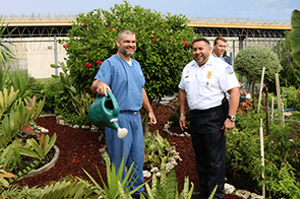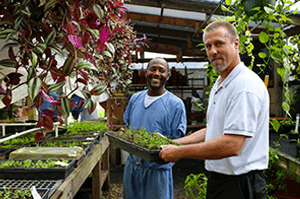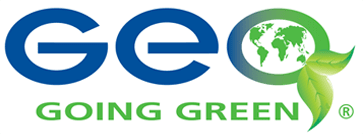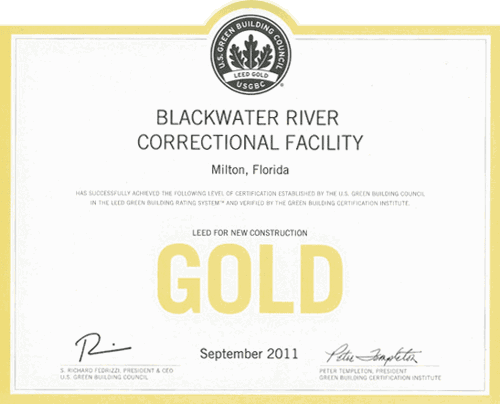



GEO is committed to creating sustainable environments in the operation of its facilities worldwide. As GEO facilities adopt a green operational philosophy, both operating costs and emissions are lowered. For several years, GEO has tracked and analyzed its facilities’ utility operating costs and emission rates. GEO’s goal is to heighten environmental awareness and encourage each facility to increase environmental sustainability.

Year End Company Wide Savings:

EXAMPLE OF UTILITY COST SAVING:
Joe Corley Processing Center:
Facility improvements include push button fixtures, lighting replacement, and air conditioning automatically turns off when room doors open. SAVINGS OF 14%
For several years, GEO has incorporated industry-leading sustainability standards in the development of new facilities. In October 2011, Blackwater River Correctional and Rehabilitation Facility, located in Milton, Florida, became GEO’s first Leadership in Energy and Environmental Design (LEED) Certified project to receive a Gold Certification. Since the development of the Blackwater River Correctional and Rehabilitation Facility, ten new or expanded GEO facilities have been designed to LEED certification standards or the international equivalent.
LEED certification is based on an evaluation of a number of environmental factors including but not limited to the sustainability of the site, the efficient use of water, energy, material and other resources, the quality of indoor air and overall environment, and the use of innovative and environmentally friendly technologies and strategies.
The LEED certification program is administered by the Green Building Certification Institute. The Green Building Certification Institute determines that a completed project satisfies all prerequisites and has achieved a minimum number of points outlined in the LEED for the rating system to achieve a particular level of LEED certification, such as LEED Certified, LEED Silver, LEED Gold or LEED Platinum.

New or expanded GEO Facilities designed to LEED silver standards or the international equivalent:
New or expanded GEO facilities designed to LEED standards:

BI continually looks for new ways to be environmentally aware when it comes to the disposal of materials. The majority of equipment orders are shipped in plastic cases, which are durable and can be reused four to five times longer than previous cardboard shipping containers. Packaging for supplier parts also contains recycled content. BI has a shipping carton return service in place for all customers.
BI developed a “Greenville” station within manufacturing to recycle, repair, and reuse plastic products. BI has initiated various energy efficient and environmentally friendly programs including the installation of energy efficient lighting. We buy products that are free from Ozone Depleting Chemicals (ODCs), lead, and other harmful substances.
BI voluntarily complies with two major environmental directives, the Waste Electrical and Electronic Equipment Directive (WEEE) and the Restriction of the Use of Certain Hazardous Substances in Electrical and Electronic Equipment (RoHS). Both WEEE and RoHS became European Law in February 2003.
WEEE is the European Community directive on waste electrical and electronic equipment that sets collection, recycling, and recovery targets for all types of electrical goods. WEEE aims to minimize the impact of these goods on the environment by increasing re-use and recycling to reduce the amount going to landfills. The directive places the responsibility for the collection, treatment, and disposal of waste electrical and electronic equipment on the manufacturers of such equipment. Distributors are required to allow consumers to return their waste equipment free of charge. RoHS bans placing new electrical and electronic equipment that contains more than the agreed levels of lead, cadmium, mercury, hexavalent chromium, polybrominated biphenyl (PBB), and polybrominated biphenyl ether (PBDE) flame retardants in the European market.